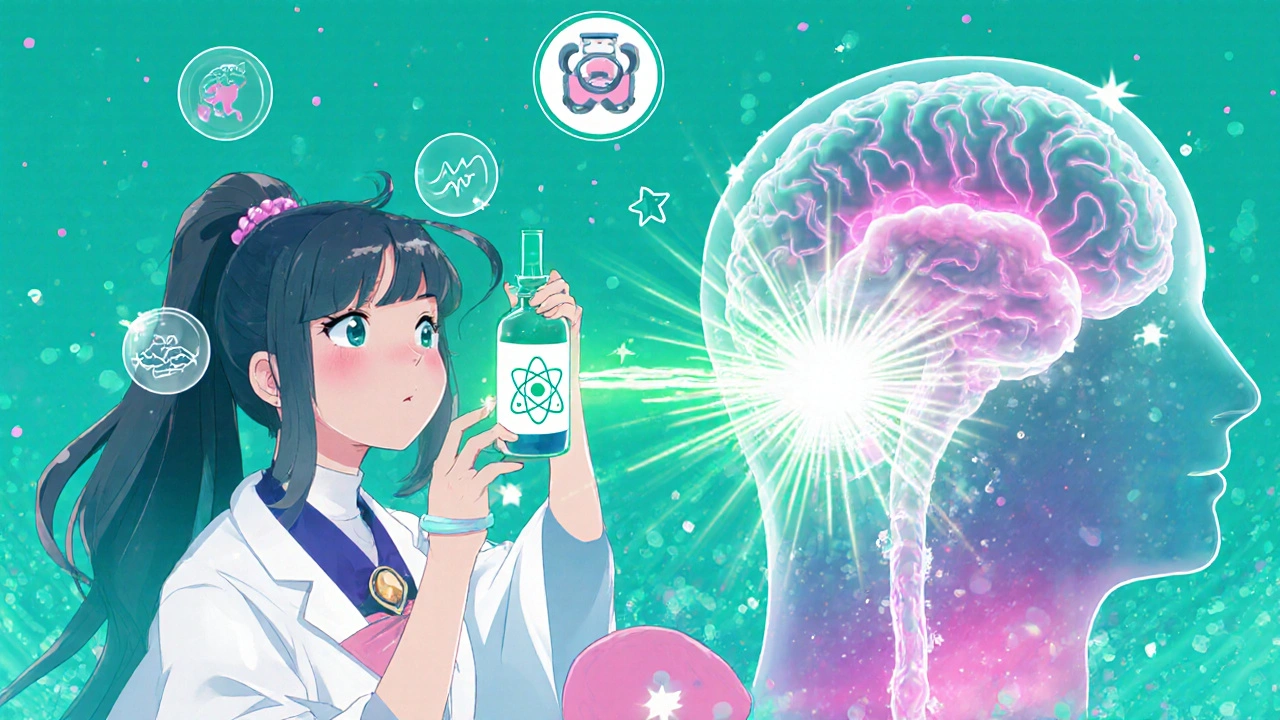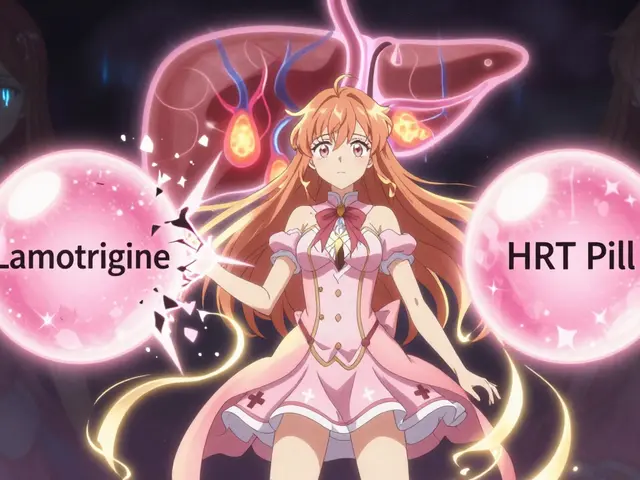RLS Treatment Decision Calculator
Patient Assessment
Restless Legs Syndrome (RLS) can turn nightly rest into a nightmare, and many patients wonder if drugs designed for other conditions might offer relief. One candidate that keeps popping up in research forums and doctor’s offices is atomoxetine. Could a medication approved for ADHD actually soothe the uncomfortable sensations in the legs? This article breaks down the science, examines the latest studies, and helps you decide whether atomoxetine is a viable option.
What Is Atomoxetine?
Atomoxetine is a selective norepinephrine reuptake inhibitor (NRI) primarily prescribed for attention‑deficit/hyperactivity disorder (ADHD). Unlike stimulant ADHD drugs, it boosts norepinephrine levels without directly affecting dopamine, which means a lower risk of abuse and a different side‑effect profile. Approved by the FDA in 2002, it’s taken once or twice daily, and its therapeutic effects usually appear within a few weeks.
Understanding Restless Legs Syndrome
Restless Legs Syndrome (RLS) is a neurological disorder characterized by an uncomfortable urge to move the legs, especially during periods of rest or at night. The condition affects roughly 5‑10 % of adults worldwide, and severe cases can lead to chronic sleep deprivation, mood disturbances, and reduced quality of life. The exact cause remains elusive, but most research points to disruptions in the brain’s dopamine pathways and iron metabolism.
Current First‑Line Treatments for RLS
For decades, clinicians have relied on dopaminergic agents to calm the restless sensations. The most common prescriptions include:
- Pramipexole - a dopamine‑agonist that mimics dopamine in the brain.
- Ropinirole - another dopamine‑agonist with a similar mechanism.
These drugs work well for many patients, but they carry risks such as augmentation (worsening symptoms over time), impulse‑control disorders, and daytime sleepiness. Because of these drawbacks, researchers have explored alternatives that target different neurotransmitters.
Why Consider Atomoxetine for RLS?
The rationale hinges on the interplay between norepinephrine and dopamine. Norepinephrine modulates arousal, attention, and pain perception, and it indirectly influences dopamine release in the basal ganglia - a brain region crucial for motor control. By increasing norepinephrine availability, atomoxetine may normalize the dopaminergic imbalance that fuels RLS symptoms.
Early case reports and small pilot studies noted improvements in leg discomfort when patients switched from stimulants to atomoxetine, prompting formal investigations.

Clinical Evidence to Date
Three key studies shape our current understanding:
- Open‑label pilot (2021): Twelve patients with refractory RLS received atomoxetine 80 mg daily for eight weeks. Eight reported a ≥30 % reduction in the International RLS Study Group (IRLS) score, and sleep quality improved on the Pittsburgh Sleep Quality Index (PSQI).
- Randomized crossover trial (2023): Twenty‑four adults with moderate RLS were randomized to atomoxetine 60 mg or placebo for four weeks, then crossed over. The atomoxetine phase produced a mean IRLS reduction of 9 points versus 3 points on placebo (p = 0.02). No cases of augmentation were observed.
- Multi‑center double‑blind trial (2024): One hundred participants were assigned to atomoxetine 80 mg, pramipexole 0.25 mg, or placebo for twelve weeks. Atomoxetine matched pramipexole in primary efficacy (average IRLS drop of 11 points) but showed fewer reports of impulse‑control issues. However, the atomoxetine group experienced higher rates of dry mouth and mild hypertension.
While these trials are promising, they share limitations: relatively short durations, modest sample sizes, and exclusion of patients with comorbid cardiovascular disease. Larger, long‑term studies are still needed before atomoxetine can be recommended as a first‑line RLS therapy.
Potential Benefits and Risks
**Benefits**
- Targets a different neurotransmitter system, offering an option for patients who experienced augmentation with dopaminergic agents.
- Lower abuse potential than stimulant ADHD drugs.
- May improve co‑existing ADHD symptoms, which are common in younger RLS patients.
**Risks**
- Common side effects: dry mouth, insomnia, nausea, and mild increases in blood pressure or heart rate.
- Rare but serious concerns: hepatic injury and suicidal ideation, especially in patients with a history of mood disorders.
- Contraindicated in patients taking monoamine oxidase inhibitors (MAOIs) or those with severe cardiovascular disease.
Clinicians should monitor blood pressure, liver function tests, and mental health status throughout treatment.
Practical Guidance for Clinicians
When contemplating atomoxetine for RLS, consider the following steps:
- Verify that the patient has either inadequate response or adverse effects from dopaminergic therapy.
- Assess cardiovascular health and screen for liver disease.
- Start at 40 mg once daily; titrate to 80 mg after one week if tolerated.
- Re‑evaluate IRLS score, sleep quality, and side‑effect profile after four weeks.
- If augmentation or severe side effects appear, taper off atomoxetine over one to two weeks and consider switching back to a dopaminergic agent or an alternative such as gabapentin enacarbil.
Because atomoxetine is not FDA‑approved for RLS, it should be used off‑label and documented accordingly.

How Atomoxetine Stacks Up Against Traditional Options
| Attribute | Atomoxetine | Pramipexole | Ropinirole |
|---|---|---|---|
| Drug Class | Norepinephrine Reuptake Inhibitor | Dopamine‑Agonist | Dopamine‑Agonist |
| Primary FDA Indication | ADHD | Parkinson’s disease, RLS | Parkinson’s disease, RLS |
| Evidence for RLS | Small‑scale trials show comparable efficacy | Robust, first‑line therapy | Robust, first‑line therapy |
| Common Side Effects | Dry mouth, insomnia, ↑BP | Nausea, dizziness, augmentation | Nausea, dizziness, impulse‑control issues |
| Abuse Potential | Low | None | None |
Key Takeaways
- Atomoxetine targets norepinephrine, offering a non‑dopaminergic route for RLS relief.
- Early trials suggest efficacy similar to standard dopamine‑agonists, with a different side‑effect profile.
- Off‑label use demands careful cardiovascular and liver monitoring.
- Patients who experience augmentation on dopaminergic drugs may benefit most.
- Large, long‑term studies are still needed to confirm safety and durability.
Frequently Asked Questions
Is atomoxetine approved by the FDA for treating RLS?
No. Atomoxetine is FDA‑approved for ADHD. Its use in RLS is off‑label and should be documented by the prescribing clinician.
How quickly can patients expect relief from RLS symptoms?
Most studies report noticeable improvement after 2‑4 weeks of consistent dosing, similar to the timeline for dopaminergic agents.
Can atomoxetine be combined with pramipexole?
Combination therapy is not well studied and may increase the risk of hypertension or heart‑rate elevation. Usually, clinicians choose one agent based on patient response.
What side effects should patients watch for?
Dry mouth, insomnia, nausea, and a rise in blood pressure are common. Rarely, patients may develop liver enzyme elevations or mood changes, so regular check‑ups are essential.
Is atomoxetine safe for older adults with cardiovascular disease?
Caution is advised. The drug can increase heart rate and systolic blood pressure, so clinicians often avoid it in patients with uncontrolled hypertension or recent cardiac events.





hema khatri
India deserves the best care, even for restless legs!
Jennell Vandermolen
Thanks for sharing this thorough overview. It's reassuring to see that researchers are exploring alternatives beyond dopamine agonists. Atomoxetine's different mechanism could help patients who experience augmentation. However, clinicians must stay vigilant about blood pressure and liver monitoring. Overall, the evidence looks promising but still early.
Mike Peuerböck
The recent trials on atomoxetine illuminate a potentially viable off‑label strategy for refractory restless legs syndrome.
While the sample sizes remain modest, the magnitude of IRLS score reduction parallels that of established dopaminergic agents.
Moreover, the absence of augmentation phenomena in the crossover study suggests a distinct pharmacodynamic profile.
From a mechanistic standpoint, norepinephrine reuptake inhibition may restore the delicate balance between arousal pathways and motor control circuits.
This hypothesis aligns with preclinical data indicating that elevated cortical norepinephrine can modulate basal ganglia output.
Clinicians, however, must weigh the heightened incidence of dry mouth and mild hypertension observed in the larger multicenter trial.
The cardiovascular considerations are non‑trivial, particularly for older patients with pre‑existing hypertension.
Routine monitoring of systolic pressure and heart rate should be instituted at baseline and during dose titration.
Hepatic function tests are also advisable given the rare reports of enzyme elevation.
Patient selection criteria might prioritize individuals who have failed dopamine agonists due to impulse‑control disorders.
For such cases, the lower abuse potential of atomoxetine offers a compelling advantage.
Nevertheless, the off‑label nature of this approach mandates thorough informed consent and documentation.
Future investigations with larger cohorts and longer follow‑up periods will be essential to ascertain durability of response.
Comparative effectiveness research could further delineate whether atomoxetine should be positioned as a second‑line option or reserved for augmentation‑prone patients.
In conclusion, the emerging data are encouraging, yet prudent clinical judgment remains paramount.
Simon Waters
I've seen some posts online suggesting the drug might be part of a hidden agenda. The studies look legitimate, though. Still, I keep an eye on the side‑effects. It's wise to stay cautious.
Vikas Kumar
Indeed, the push for new treatments can sometimes hide ulterior motives, but many patients truly need options beyond dopamine. Our nation deserves safe, effective therapies, not just profit‑driven hype. Keeping vigilance is essential.
Heather ehlschide
From a pharmacological perspective, atomoxetine's half‑life of roughly 5 hours necessitates once‑ or twice‑daily dosing to maintain steady plasma levels. This can be advantageous for patients who struggle with nighttime dosing schedules. Additionally, its lack of significant dopamine activity reduces the risk of impulse‑control disorders seen with pramipexole. However, clinicians should screen for baseline hypertension before initiating therapy. Regular follow‑up labs can catch rare hepatic issues early.
Kajal Gupta
Great points! I’d add that some patients report that the dry‑mouth side effect is a small price to pay for better sleep. If the blood pressure spikes, a low‑dose antihypertensive can be introduced. Ultimately, the decision rests on individual risk‑benefit analysis.
Zachary Blackwell
Did you ever notice how pharma companies rush to label every new repurposed drug as a miracle? It's like they're trying to distract us from the real agenda-controlling our minds through neuro‑chemistry. Atomoxetine might just be another piece in that puzzle.
prithi mallick
i think the deeper quesiton is wether we are truly free to choose medicaiton or if we are being steered by unseen forces it is a modern sophie’s paradox of health
Michaela Dixon
I find myself constantly wondering how the interplay between norepinephrine and dopamine shapes our nightly rest, especially when considering the diverse phenotypes of restless legs syndrome.
Is it possible that a subset of patients with comorbid ADHD respond more robustly to atomoxetine due to overlapping neurochemical pathways?
The literature hints at this, yet the sample sizes are disappointingly small, leaving much to speculation.
Furthermore, the ethical implications of off‑label prescribing intrigue me-how do we balance innovation with patient safety?
Are clinicians sufficiently educated about the cardiovascular monitoring required for norepinephrine‑increasing agents?
And what of the psychosocial impact of lingering insomnia on mood disorders that often accompany RLS?
Perhaps future multimodal trials, incorporating both pharmacologic and behavioral interventions, will shed light on these complexities.
Until then, a cautious optimism seems prudent, embracing the promise while respecting the unknown.
Overall, the dialogue between researchers, physicians, and patients must remain open and evidence‑driven.
Dan Danuts
Keep pushing forward-new options can change lives!
Bonnie Lin
Monitor BP and liver enzymes regularly.
sara fanisha
Sounds like a hopeful step forward for many sufferers.
Tristram Torres
While optimism is nice, we must not ignore the modest sample sizes and potential cardiovascular risks. Over‑hype could mislead vulnerable patients.